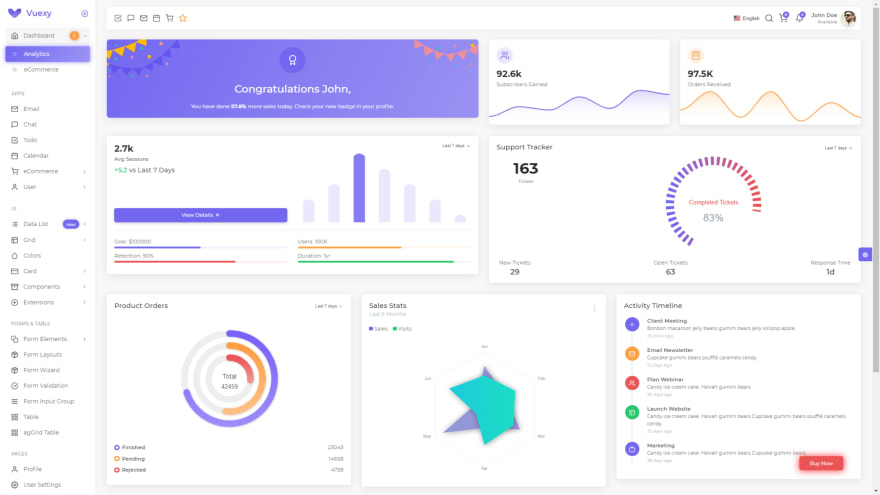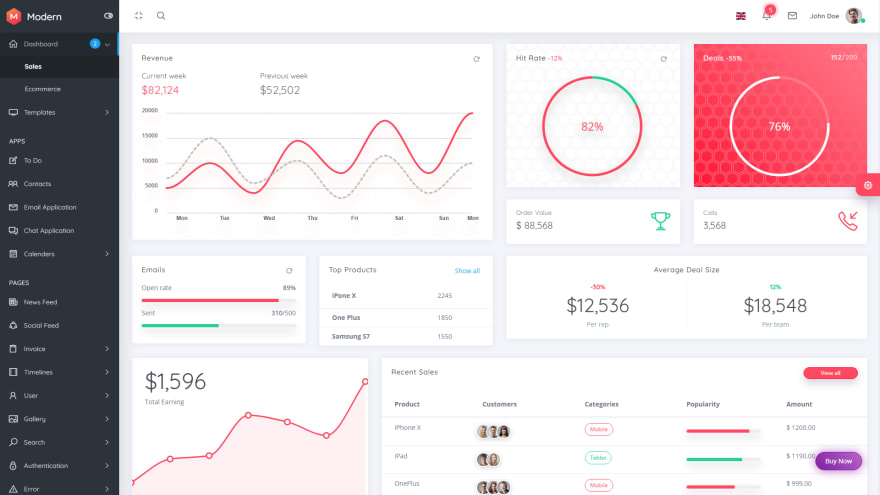How to Become a Front End Developer - Step by Step Guide
In previous web developer blog, we learned or discussed about the difference in Front End and Back End.
Now, in this blog you are going to know about
- what is front end,
- why should we learn this,
- how much salary and
- the future scope.
A front end developer, also known as a front end web developer, is a professional responsible for the design and implementation of the interface. The users require this interface so that they can access the application in question. A web designer is a professional who creates a website’s appearance and design. And the front end developer makes sure that the design works online by using coding languages such as CSS, HTML, and JavaScript.
Note that there’s a trend these days where the line between the front end and back end development has been blurring. Primarily since many of the tasks that fall in the domain of back end developers are being increasingly handled by the front end developers.
As a final aside, there are also full-stack engineers. They are full-stack developers who have project management experience, adept at disciplines in the configuring, managing, and maintaining computer networks and systems.
Skills Required to Become a Front End Developer
Since the front end developer is the rock star of website/app development, they need to have a well-stocked personal toolbox. So a front end developer skills include the need to:
- Have a degree in Computer Science or similar field
- Be proficient in coding languages such as HTML, CSS, JavaScript, and jQuery
- Understand server-side CSS.
- Be experienced with graphic design applications
Roadmap to become a front end developer:

Resources
1. Internet and how it works?
As we all know, the Internet is ruling the world. So, it is important to know the basics of the internet and how it works as it is the key knowledge that every developer should have.
Internet is a global network of computers connected to each other which communicates through a standardized set of protocols.
i. HTTP: Standard protocol using which the webpages are transferred over the internet.
You can check some detailed blogs here.
- HTTP in depth
- HTTP/3: the past, the present, and the future
- What Is HTTP/3 – Lowdown on the Fast New UDP-Based Protocol
ii. Browsers: A software application for accessing the information on the World Wide Web.
Browsers are a very important part of the current era. And why not? It literally brings the whole world to your fingertips. So, it'll be great to know a bit about them as you are using them on a daily basis..!! Right?
Here is an amazingly detailed article How Browsers Work: Behind the scenes of modern web browsers By Tali Garsiel and Paul Irish. You'll surely find this article excellent and helpful.
iii. Domain name
A domain name is an identification string that defines a realm of administrative autonomy, authority, or control within the Internet. They are used to identify one or more IP addresses
For further details check this article on How to register a domain name for your website.
iv. Web Hosting
Web hosting is a service provided by companies (the web host) that sell or lease space on a server where you store the files that make your website accessible on the internet.
For detailed information on web hosting you can check this article on What is Web Hosting
v. DNS (Domain Name System): One of the fundamental blocks of the internet
- Here is an useful guide for DNS: DNS in one picture
2. Basics: HTML, CSS & JS
Front end web developers use three primary coding languages to code the website and web app designs created by web designers:
- HTML
- CSS
- JavaScript
i. HTML: First pillar & the most important skill for web developers as it provides the structure for a web page.
- Learn the basics of HTML
- Make a few pages as an exercise
You can check Tutorial For HTML.
ii. CSS: Second pillar of web development and used to style web pages so that they look good.
- Learn the basics of CSS Style pages from the previous step
- Build a page with grid and flexbox
You can check Tutorial For CSS.
iii. JS Basics: Third pillar of web development and used to make your web pages interactive.
- Get familiar with the syntax Learn basic operations on DOM
- Learn mechanisms typical for JS (Hoisting, Event Bubbling, Prototyping)
- Make some AJAX (XHR) calls Learn new features (ECMA Script 6+)
- Additionally, get familiar with the jQuery library
You can check tutorials for JavaScript
3. General Development Skills
Following are some skills you will require as by learning these skills you'll be able to start your journey of a front-end developer with ease.
- Learn GIT, create a few repositories on GitHub, share your code with other people
- Know HTTP(S) protocol, request methods (GET, POST, PUT, PATCH, DELETE, OPTIONS)
- Don't be afraid of using Google, Power Searching with Google
- Get familiar with the terminal, configure your shell (bash, zsh, fish)
- Read a few books about algorithms and data structures
- Read a few books about design patterns.
- Git and Version Control
Git is the tool used to save code and create different versions, allowing you to collaborate with other developers. The top place to store code and collaborate on open source software is GitHub.
Here is an awesome article for Skiils to become a Front End Developer.
4. Styling: CSS Preprocessor & Architecture
i. CSS Preprocessor
A CSS preprocessor is a program that lets you generate CSS from the preprocessor's own unique syntax. preprocessors can make CSS code more organized.
ii. CSS Architecture
-BEM
-CSS Modules
-Atomic
-OOCSS
-SMACSS
-SUITCSS
The following are some good articles on CSS Architecture, that you might find helpful.
-CSS Architecture
-CSS Modular Architecture
-Styling Modern Web Apps
iii. CSS in JS
CSS-in-JS is a collection of ideas to solve complex problems with CSS. It is NOT a particular library, but different libs might solve a different subset of problems and use different approaches, depending on their implementation details.
-Styled Components
-Radium
-Emotion
-JSS
-Aphrodite
You should go through the article What actually is CSS inJS. It'll help you to understand it in a better way.
5. Get familiar with the tools that you will be using.
To become a frontend developer, you should spend some time on learning tools that you will use as a web developer like built tools, unit testing tools, debugging tools, etc.
Well, users are going to interact with your websites through a web browser. The way your site is rendered by these browsers is going to be a big part of whether your work is successful or not. So, it'll be great to know about the tools that can help you to develop a satisfying app/website/product.
All modern web browsers come equipped with developer tools. These tools allow you to test and fine-tune your pages in the browser itself, in ways specific to how the browser is interpreting your code.
Here are some of the useful tools:
i. Package Managers
ii. Task Runners
iii. Modular Builder
v. Linter & Formatter
6. CSS Frameworks
The CSS framework is a code library that abstracts common web designs and makes the designs easier for a developer to implement in their web apps. In simple terms, a CSS framework is a collection of CSS style-sheets that are prepped and ready to use.
-Bootstrap
-Materialize, Material Design Lite
-Bulma
-Semantic UI
7. Frameworks
These are packages containing pre-written, standardized code in files and folders. They give you a base to build on while still allowing flexibility with the final design. Typically, front-end frameworks contain the following components:
- A grid that makes it simple to organize the design elements of your website
- Defined font styles and sizes that vary based on its function (different typography for headings versus paragraphs, etc.)
- Pre-built website components like side panels, buttons, and navigation bars
Following are some of the most used front-end frameworks
i. Vue.js:The Progressive JavaScript Framework
- Vue.js is an open-source model–view–ViewModel front-end JavaScript framework for building user interfaces and single-page applications.
You can check the guide on the official site of VueJS.
Also, there is a detailed article on Trending VueJS UI Components Library and frameworks that you'll find useful.
- Have a look at the Vuexy Vuejs Admin Template which is made using the Vuejs.
ii. React: A JavaScript library for building user interfaces.
- React is an open-source, front-end, JavaScript library for building user interfaces or UI components. It is maintained by Facebook and a community of individual developers and companies.
You can check the tutorial on the official site of React.js. You can also check ReactJS Roadmap For Developers for a detailed overview of how to start with reactjs. Apart from this, there is an article on the best ReactJS UI Frameworks and component libraries which will be helpful.
iii. Angular
Angular is a TypeScript-based open-source web application framework led by the Angular Team at Google and by a community of individuals and corporations.
According to Glassdoor, a front end developer in the United States can earn an average of $86,178 per year. A “regular” front-end developer can earn an average salary of $71,350 a year, according to Payscale.
A junior front end developer (more about them below) earns about $49,000 on average, but that’s hardly surprising, considering they need less experience and have fewer responsibilities.
Overall, the future looks bright for anyone who wants to become a front end developer. The latest studies predict that by 2020, there will be a deficit of approximately 1 million developers in the United States alone. The rest of the world will have it even worse, according to similar studies.
According to the United States Bureau of Labor Statistics, Web developer employment in the US is projected to grow 15% from 2016 to 2026. The rate is much faster than the average for all other occupations.
Although these numbers seem incredible, if you pause and consider the times, it’s not so surprising. Increased Internet usage, especially in the mobile field, means a greater need for user interfaces, which in turn means more front end developer jobs. Web development is a field whose potential is tied closely to the Internet’s popularity, and the latter is surging with no signs of letting up. If you want to go where the jobs are, then look no further.
Keep Learning
So, after going through this guide, you can kickstart your journey as a frontend web developer for sure. Although, learning is the only key to success. For that, you have to practice and learn consistently.
We have mentioned some relevant articles above which you can refer to for details and some basics. We highly recommend you to go through them.
Here is a complete guide that you can go through Front-end Developer Handbook 2021 - Learn the entire JavaScript, CSS and HTML development practice!
The following are some excellent courses for front end developers:
I Hope you like the Post :)
For more interesting Post and Videos, kindly subscribe to our youtube channel.




Comments
Post a Comment